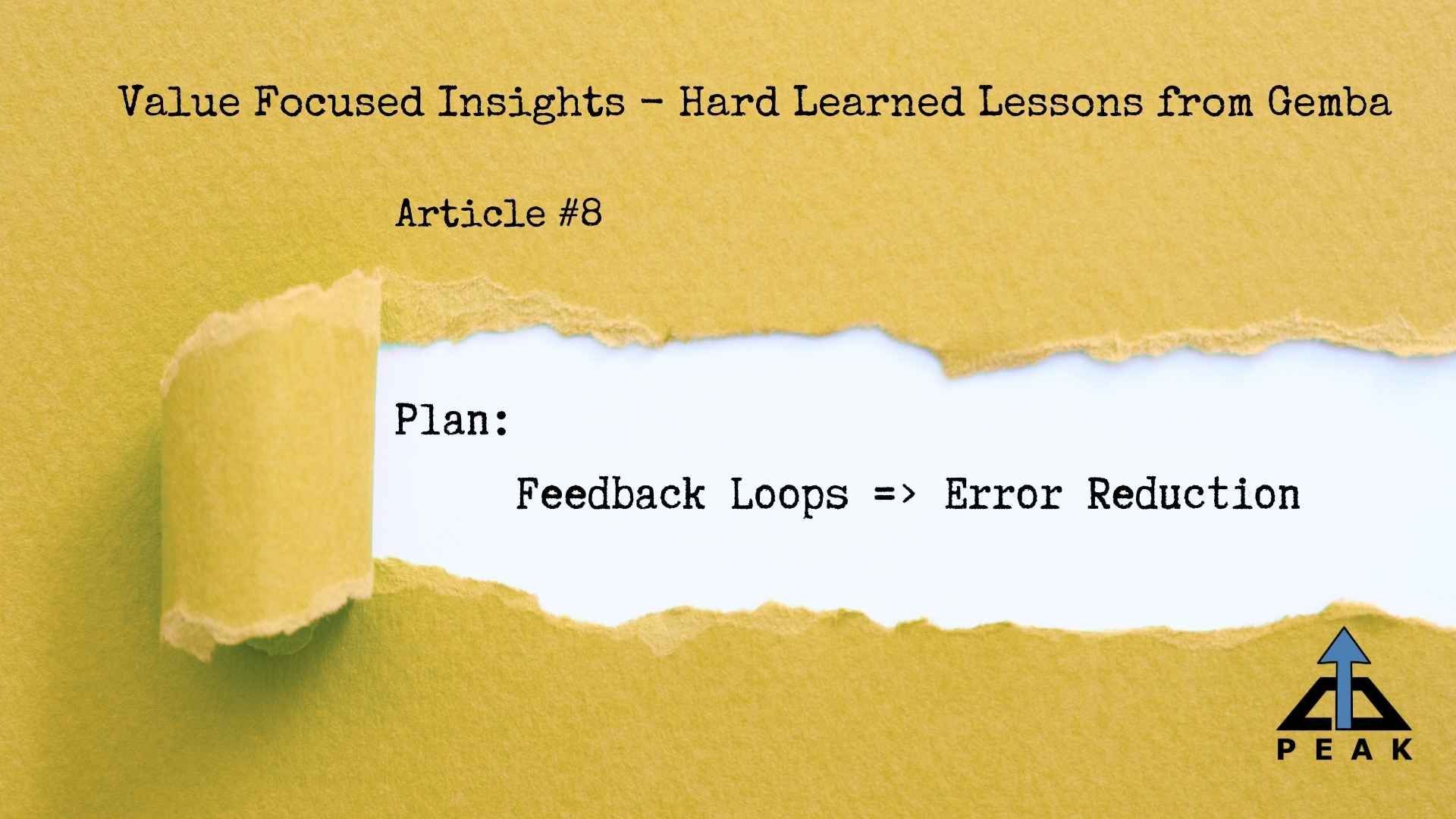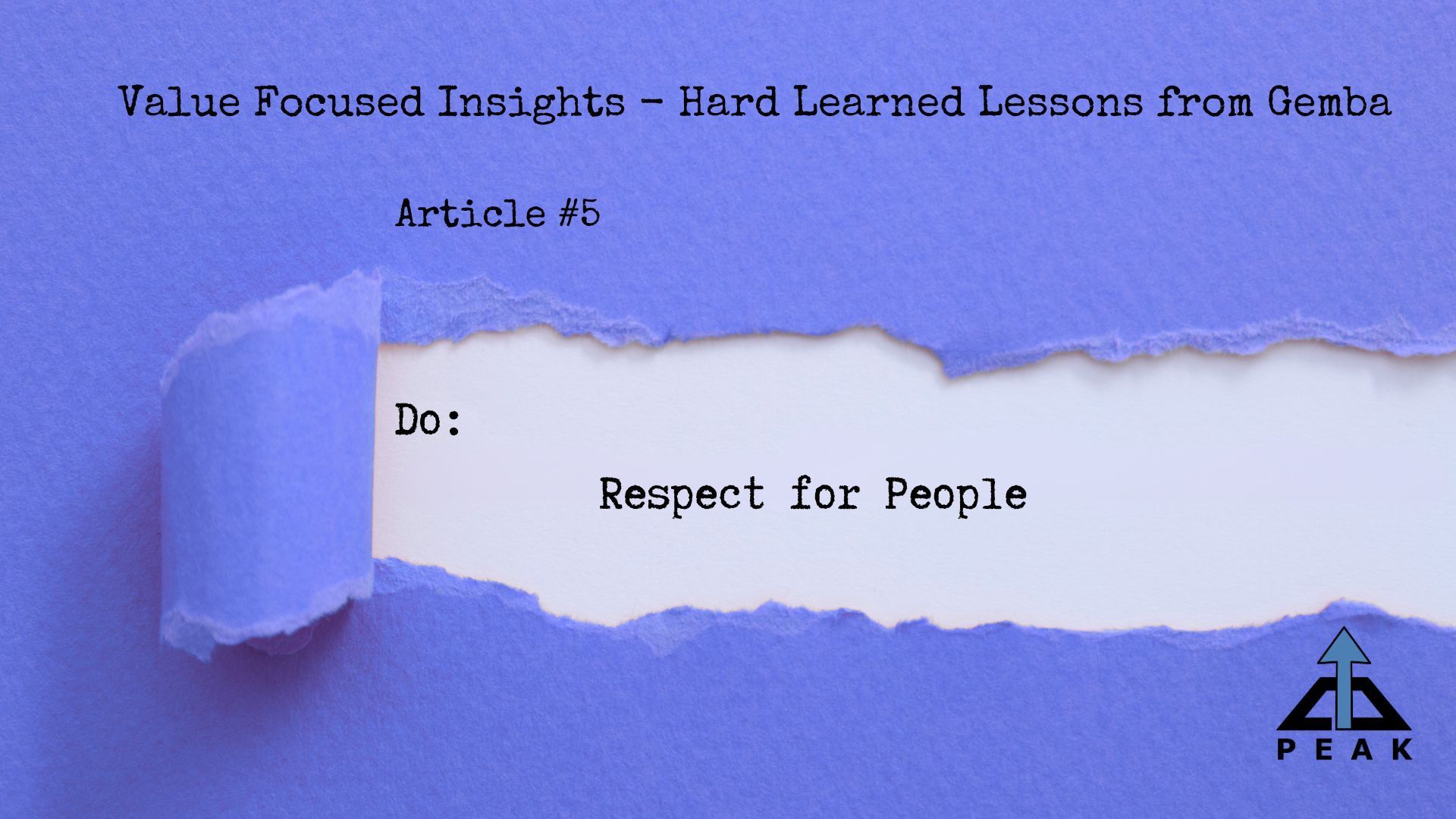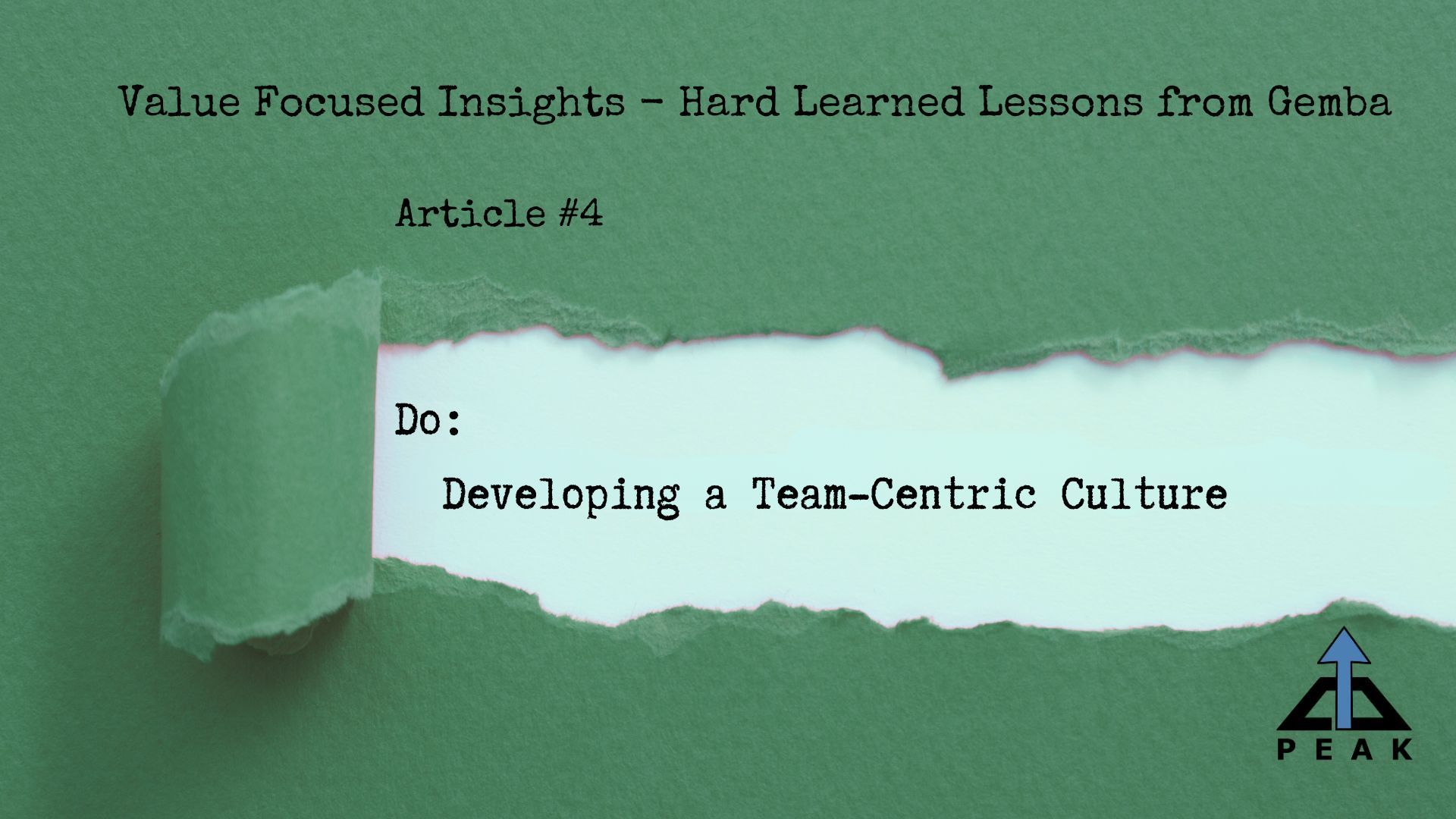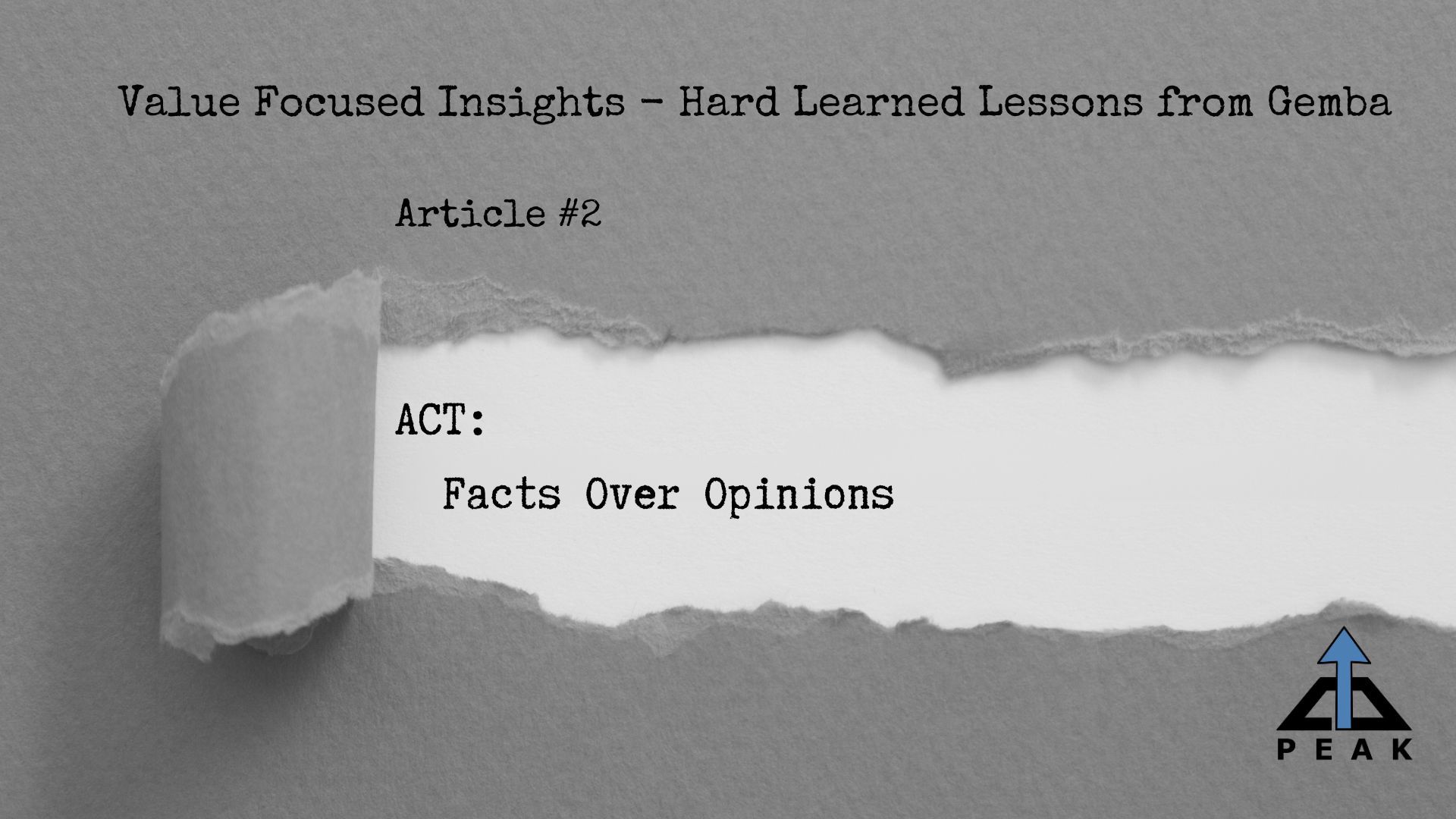Don’t Worry, the Game Goes On…
Tim Upchurch

March Madness is in full swing again and by now most brackets are busted.
The experts and casual fans alike have once again been wrong.
Did your team reach the final four? If not, want to keep the excitement going?
It might be time to hitch your wagon to the team at gemba.
At this time of year, I can’t help but draw comparisons between the college basketball games going on in each of the tournaments and the reality of gemba in our workplaces.
- Each has specific rules that must be followed to achieve the goal.
- Each requires practice, dedication, concentration, and skillsets developed over years of practice.
- Both are highly influenced by randomness, luck, and variation.
- Great coaches, great players and team chemistry provide a significant advantage.
- Both are played against the clock, with highly motivated players putting their bodies on the line for their teammates.
- Sometimes key personnel are missing and the next person up has to step in and take the shot.
- We collect and analyze numerous metrics to gain any edge.
- Feedback is immediately provided, and improvement is possible if taken to heart.
I am sure you could come up with many more comparisons. Some may also see gaps in the approaches commonly taken for each basketball team that you haven't applied to your work processes and teams. This may be an opportunity….
“People may hear your words, but they feel your attitude.”
- John Maxwell
I find it very interesting that fans and alumni alike will spend thousands of dollars to travel across the country to watch a basketball game. An event that lasts a little over 2 hours. Many of us who don’t travel with the team are glued to the newsfeeds, TV broadcasts and online content. In recent years online sports betting has been added to ramp up the excitement and engagement.
- Who will miss the most free-throw shots?
- Who will hit the last shot of the quarter?
- Which team will move on to the next round?
We can bet on almost anything – pulling us even more and more into the spectacle.
People watch at work, people watch at home, and many of us fill out the brackets - determined to win bragging rights. According to the NCAA, the odds of picking a perfect bracket if you randomly pick winners is 1 in 9.2 quintillion (9.2x1018). If you apply some basketball knowledge, the odds drop to 1 in 120 billion. For comparison, winning the Mega-Millions lottery is only 1 in 303 million. So, you’d have to be billions of times luckier to randomly pick a perfect bracket than to win the lottery. It probably says something about our society and understanding of statistics that we even engage in this new science of “bracketology”.
We have grown so enamored with the tournament. We love it because of the unpredictability and uncertainty. Unlike most things in our life – each game is finite and has a clear winner and loser. As fans, we may not like the conclusion, but love it because the result is so final, so real, and often so emotional. We get drawn in and go from being spectators to fully engaged. It becomes personal to us, and we create our own vested interest in the outcome. We are consumed by it, and we think the whole thing is vitally important in the moment.
Don’t get me wrong - the games are exciting, and I love it when my team wins. But when it becomes a part of your personal identity (even though we are just really observers), it seems a little much. It is estimated that lost productivity as a direct result of March Madness will cost employers up to $17.3 billion this year alone.
The thing that I find really curious is that most adults can participate in something just as exciting every day at work but choose not to.
I am talking about gemba – where work is performed and value is generated in a process. On any given day there are thousands of teams working together against incredible circumstances to produce value - either as a service or deliver some product quantity. Gemba is messy, it is variable, and the odds of success are often just as challenging as when a 12-seed squares up against a 5-seed in the tournament. Maybe there is a difficult deadline that must be met and the team is already behind takt time. Perhaps we are short-staffed today because of a flu bug going around, or the process isn’t running right since we shifted to that cheaper raw material, or the repair parts for the broken machine are blocked at the border and didn’t show up on time. These real-life scenarios happen in your business constantly. There are problems, noise, and urgency not only daily, but every cycle, every hour, and every shift. These are your people trying to hit the goal set for them and get a “win” for your team today. They are dealing with all the fluctuations, randomness and weaknesses in your processes. Like our favorite teams, sometimes they can pull out exciting wins under extreme pressure, and sometimes suffer “the agony of defeat”. And tomorrow it all starts over again.
As managers, we often choose to not participate in our own games. We have removed ourselves away from the action. We use data, screens, and reports to distance ourselves from the uncertainty and excitement of the gemba. We believe we can understand what happened by looking only at the summaries provided after the fact. Often, we don’t even look at the details and just focus on the results. We would never imagine that by only looking at the box scores we could understand the ebb and flow of one of our tournament basketball games. However, we have no issue with looking at a number in a report and think it tells the complete story of the shift / day / month. Worse, we also start to believe it tells us something about the character and work ethic of our teams. We decide to ignore the impact that luck and randomness play in environments with unstable processes. By doing so, we commit a great dis-service to our teams. We also miss the chance to be part of the solution, to participate in the noise and chaos which are always present when value is added - to lead improvement efforts from the front.
My challenge to you? Now that the tournament is wrapping up, we should all get some free time back. Let’s use that time to reinvigorate our passion about value and return to the game that really matters. Let’s get our data firsthand, from the source – let’s go to gemba. If you’ve been negligent, how about developing a nice cow-path and walking it several times each day? Go out to see what's going on instead of sending that IM message to the manager when the numbers are behind. What is working? What is running to standard? What isn’t working the way it needs to? Smell it! Maybe if you are lucky, you might even get your hands dirty or learn something from the people in "the arena". In the next meeting you won’t have to "I heard that X happened", you can confidently state that you saw it firsthand – “I was there”.
“No good decision was ever made in a swivel chair”.
- General George S. Patton
Do you run a food service business? Try busing tables during rush hour or deliver food to your customers. Understand the challenges that your staff is going through from firsthand experience. Do you run a manufacturing area? Draw a circle on the floor and stand there for hours, watching. When was the last time you actually spent the equivalent of a single basketball game really focused at your gemba? Observe the processes that are going on, the challenges and the countermeasures that your team has put in place to compensate for failing processes. Learn to understand that the game is not just about the result, but the inputs and the processes. More importantly, it’s about the players and their coaches. It's about how they focus on the key input variables every cycle, in order to achieve the key output variables.
Get excited about the live game happening at your workplace every day. I challenge everyone to transfer the passion shown for the NCAA tournaments and channel it into supporting your work teams fighting every day for a result. You do this for the next several weeks and I guarantee you will have a newfound respect for your teammates. And they will for you as well. Show them that you support them. Get to know your key players, their weaknesses, and their strengths. Understand the gaps in knowledge and about how your processes are really working compared to the way they are designed. Help your team problem solve by correcting the issues preventing them from being successful today. The cool thing about being in the game is you might get a chance to influence the outcome. Heck - you might even get back some of the $17+ billion lost this year during March Madness. I am confident that just by showing up you will impact the team and yourself in ways you didn’t think possible.
Cheers.
Peaks and Valleys.....












